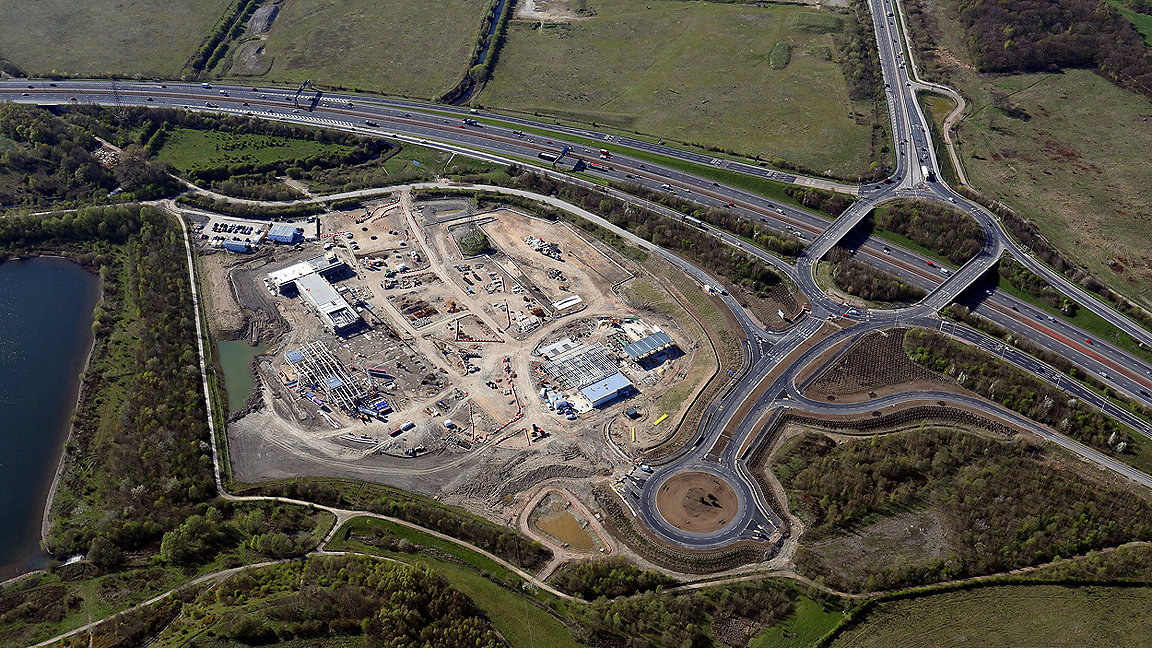
In summer 2020, during a secondment to the Infrastructure and Projects Authority (IPA), I was part of the small government team that drafted the Construction Playbook. The intention was that this collection of policy measures and signposts to guidance and best practice, published in December that year, would improve the way all public-sector programmes and projects were assessed, procured and managed, from health and defence to road and rail.
When the pandemic struck, government policymakers went into overdrive to ensure the economy survived the uncertain times. Guidance was rapidly introduced to allow construction work to continue as effectively as possible with COVID-19 restrictions; but attention was also directed towards long-standing issues such as stubbornly low productivity growth and slow progress on digitisation, with the playbook aiming to deal directly with these issues.
With so many changes having taken place due to the pandemic, it can be difficult to identify the specific impact of the playbook itself. But from our experiences with clients, and first-hand knowledge of the direction programmes are now taking, it's clear that it has already had an impressive influence, and we have many reasons to be hopeful for its future.
Government and industry collaborate on constructive policy
Key to the playbook's influence – and potentially its success – is that it was created in collaboration with the construction industry. This can be seen in the industry compact that appears early in the document, which sets out the shared commitment by government and industry to achieve its ambitions.
We were able to bring together a broad group from the sector to contribute, sourcing expert input to shape and land the key recommendations. Instead of resulting in a collection of new, top-down policies, the consultation process recognised best practices already happening in isolated parts of the sector. The playbook collated and codified these, with the goal of making them the norm and elevating overall performance.
Even the playbook's target users indicate the collaborative nature of its creation: the policies are as relevant for the government, in its capacity as a construction client with significant buying power, as they are for the wider industry. There is emphasis on clients, including government, providing work pipelines so that the market has sight of what's coming and can make informed decisions, plan its capacity, and invest in its supply chain and skills. Everyone has a part to play in securing the future prosperity of the sector.
A further difference from some other policy guidance is the playbook's commitment to providing long-term solutions. In a world where ministers have frequently changing briefs and responsibilities, policies and publications can be announced and abandoned equally quickly. But the playbook was assigned a dedicated team in the Cabinet Office to implement it and provide support for early adopters.
In September, after my secondment had ended, policy-makers provided a significant and useful update to the document that brought it up to date with major developments in the industry, particularly around building safety. These updates also included an endorsement of the IPA's Transforming Infrastructure Performance: Roadmap to 2030 (TIP2030), which sets out a collective long-term vision for the built environment.
Changing conversation to prioritise outcomes
The playbook highlights a shift toward an outcome-based language and approach to work. This concept is not new, but the playbook has accelerated its adoption.
The aim of an outcomes-based approach is to maximise the overall social and economic value of programmes by clearly defining end goals and avoiding overly prescriptive solutions, especially early in a development process. Setting up a programme in this way not only produces better end results, but also encourages innovation and fresh approaches during often lengthy programmes. Given these long timeframes for projects and programmes in the public sector, and the frameworks through which they are delivered, it will be some time before the full effects of the playbook are felt; however, the conversation is already moving forward, and we have seen our clients' mindset change accordingly.
While we at Turner & Townsend have championed this methodology for a long time, it was after the playbook's initial publication that we worked with the Confederation of British Industry to develop a framework for outcomes-led projects, called Programmes with Purpose. This was put into practice in our work on the Lower Thames Crossing, where environmental priorities were built into the programme from the start, as well as targets for upskilling teams and bringing new talent into the industry.
Linked to upskilling, the playbook has also played an important part in prioritising digitalisation in construction. It initially called for the adoption of the UK BIM Framework, which sets out an overarching approach to implementing BIM (building information modelling). This was a recognition of BIM's importance both as a vital step in normalising and maturing digitalisation in construction, and also as an ingredient to utilising other modern methods of construction.
The updated playbook goes further in adopting the Information Management Mandate through its endorsement of TIP2030, which requires the use of the UK BIM Framework as a key component of delivering value through the management of information in the built environment and should apply to all public sector clients.
There is more to do across the board, though. One element the playbook perhaps understates is the importance of procurement in realising ambitions. If procurement fails to connect the desired outcomes adequately to a set of project requirements, performance controls and incentives, the scheme will face an uphill struggle. We are seeing sector-leading approaches in these areas from some clients but it remains an area that would benefit from more targeted guidance and support.
Coordinating guidance will help meet challenges
To maintain the playbook's role in promoting change the UK government, in collaboration with industry, needs to keep strengthening the document. Industry improvement is everyone's collective responsibility, and September's update offers a demonstration of this commitment.
The playbook's impact could be enhanced by encouraging greater alignment and links across the complex web of publications in this area. Construction policy and guidance have developed organically over time, and the steps being taken to coordinate and combine them are welcome.
The playbook's influence could also be strengthened by providing greater detail and guidance on how to ensure the compliance of all parties – namely, government and the market. This could come in the form of greater scrutiny from funding authorities when the investment case is made, and potentially consequences such as delays to funding or approval for programmes with insufficiently mature approaches.
What represents an acceptable level of maturity also needs to be better defined, as would ways of measuring progress. Turner & Townsend is one organisation which is already demonstrating that tracking programme maturity against the playbook's policies is possible with clients and could be rolled out more widely.
These potential improvements to the playbook, coupled with continued government funding for centres of excellence such as the IPA, will give further support to it in achieving its ambitions. So, the prospects for the playbook's future, and its role in shaping a strong construction sector and providing better outcomes for the country, are strong. Being informed by industry experience and leading the way means the document can continue to prove its importance and value.
The construction industry succeeds when it collaborates, and when government is willing to listen and adapt based on this experience. It is the nature of progress that there are still structural problems to overcome, and tough challenges to meet if the industry is to be more productive and resilient. Engaging with the playbook and its updates will help keep our industry innovating and providing value for society and the built environment.
'Industry improvement is everyone's collective responsibility'

